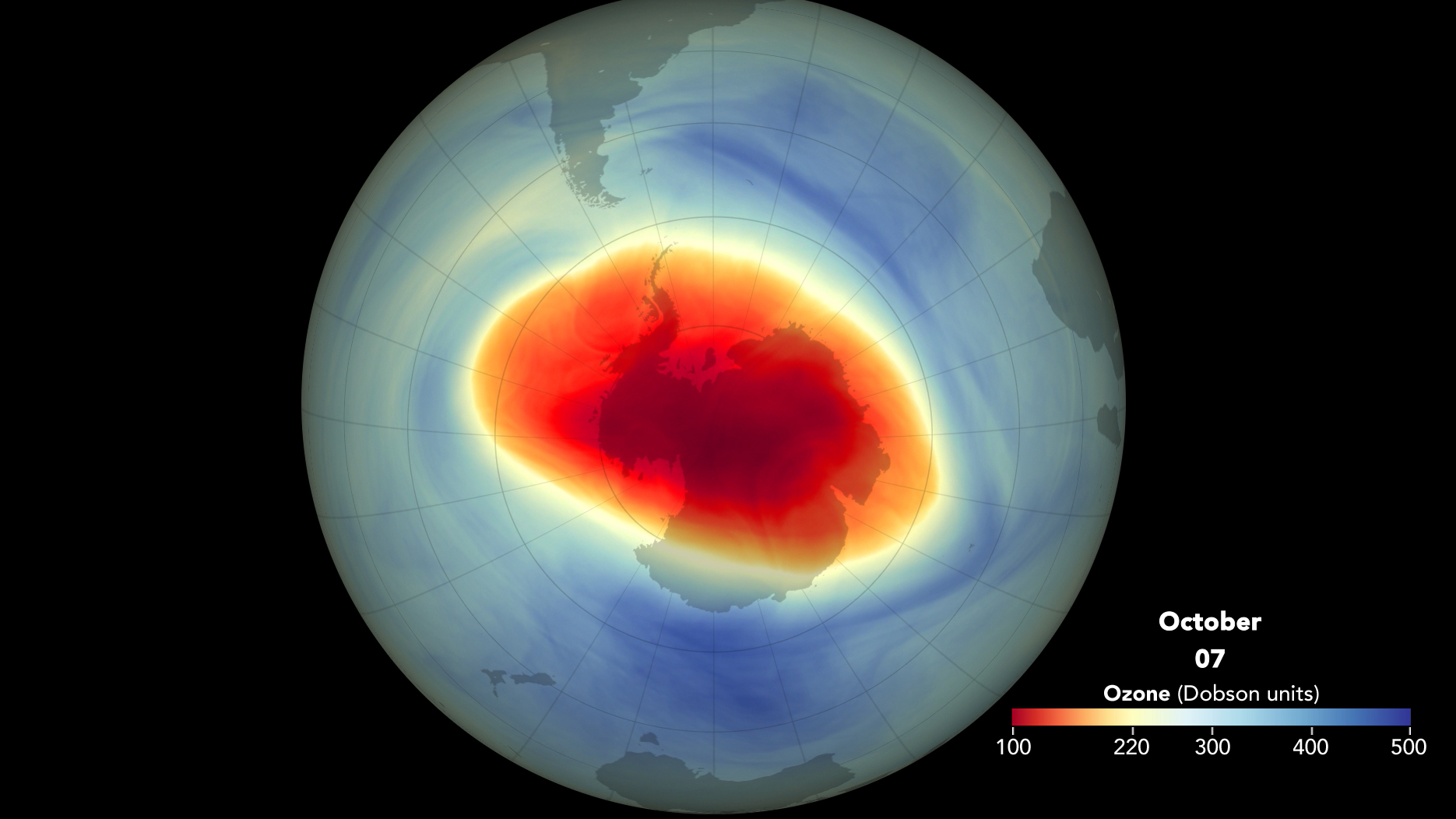October 18, 2023
Massive Ozone Hole Over Antarctica
Unveiling the Massive Ozone Hole Over Antarctica: Causes, Impacts, and Mitigation Efforts

Introduction
Satellite measurements conducted over Antarctica have revealed a colossal hole in the ozone layer, termed an “ozone-depleted area.” This expanse spans 26 million square kilometers, approximately three times the size of Brazil. This article delves into the composition and function of the ozone layer, the potential causes behind this giant hole, and its implications on both the environment and climate change.
The Ozone Layer and Ozone Hole
Location
The ozone layer resides in the stratosphere, approximately 10-30 kilometers above Earth’s surface.
Composition
It is primarily composed of ozone (O3) molecules.
Unit of Measurement
Ozone levels are measured in Dobson Units (DU).
Function
The ozone layer acts as a protective shield, absorbing and blocking a significant portion of harmful ultraviolet (UV) radiation from the sun.
Importance
It is essential for safeguarding life on Earth by preventing excessive UV radiation, which can be detrimental to living organisms and the environment.
Ozone-Depleting Substances and the Montreal Protocol
Threats from ODS
The ozone layer is under threat from ozone-depleting substances (ODS) like chlorofluorocarbons (CFCs), halons, and other synthetic compounds commonly used in refrigeration, air conditioning, and aerosol propellants.
The Montreal Protocol
The international treaty, adopted in 1987, played a pivotal role in phasing out the production and consumption of ODS. This initiative has led to a significant recovery of the ozone layer.
Current Status
Thanks to the success of the Montreal Protocol, the ozone layer is presently in the process of recovery.
Environmental Impact and Additional Facts
The recuperation of the ozone layer is crucial for the protection of ecosystems, and it plays a vital role in preventing skin cancer, cataracts, and other health issues in humans.
Additional facts include the seasonal variation in the size of the ozone hole over Antarctica, which opens in August and closes in November or December. Special winds, induced by the Earth’s rotation, create a unique climate over Antarctica, preventing mixing with surrounding air. When these winds subside, the hole naturally closes.
Potential Causes of the Giant Ozone Hole
Volcanic Eruption in Tonga
Scientists speculate that the extensive ozone hole this year may be linked to volcanic eruptions in Hunga Tonga, Tonga, between December 2022 and January 2023. These eruptions released water vapor and other elements into the stratosphere, impacting the ozone layer through chemical reactions.
Human-Induced Ozone Holes
In the 1970s, scientists discovered that human activities, primarily the use of chlorofluorocarbons (CFCs), led to significant ozone depletion. These chemicals released chlorine in the stratosphere, depleting the ozone layer.
Effective Mitigation
The Montreal Protocol, established in 1987, aimed to combat ozone depletion by phasing out ozone-depleting substances. This international agreement successfully reduced the size of ozone holes over the years.
Ozone Depletion and Climate Change
Not a Primary Climate Change Cause
Ozone depletion is not a leading contributor to global climate change.
Impact of Rising Temperatures
However, rising global temperatures may influence ozone holes. Extreme fires, such as those in southeastern Australia in 2020 and 2021, injected smoke into the stratosphere, potentially contributing to ozone depletion.
Changing Seasons
Ozone holes can alter the progression of seasons, as they extend the duration of polar vortexes, thereby lengthening winter periods.
Conclusion
Understanding the causes, impacts, and mitigation efforts surrounding the giant ozone hole over Antarctica is crucial for safeguarding our planet’s delicate ecological balance. The strides made through the Montreal Protocol serve as a testament to international cooperation in addressing environmental challenges. As we continue our efforts to protect the ozone layer, we also work towards a sustainable future for generations to come.
January 30, 2025
January 20, 2025
January 14, 2025
